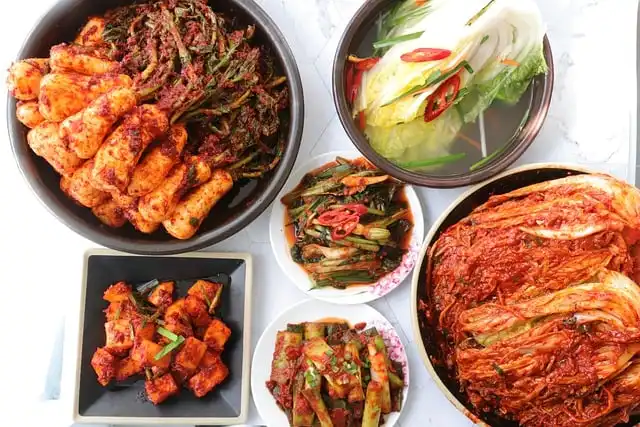Chinese Food Products Dominate Korean Tables Amid Safety Concerns
- Normal Liver Cells Found to Promote Cancer Metastasis to the Liver
- Nearly 80% Complete Remission: Breakthrough in ADC Anti-Tumor Treatment
- Vaccination Against Common Diseases May Prevent Dementia!
- New Alzheimer’s Disease (AD) Diagnosis and Staging Criteria
- Breakthrough in Alzheimer’s Disease: New Nasal Spray Halts Cognitive Decline by Targeting Toxic Protein
- Can the Tap Water at the Paris Olympics be Drunk Directly?
Chinese Food Products Dominate Korean Tables Amid Safety Concerns
- Should China be held legally responsible for the US’s $18 trillion COVID losses?
- CT Radiation Exposure Linked to Blood Cancer in Children and Adolescents
- FDA has mandated a top-level black box warning for all marketed CAR-T therapies
- Can people with high blood pressure eat peanuts?
- What is the difference between dopamine and dobutamine?
- How long can the patient live after heart stent surgery?
Chinese Food Products Dominate Korean Tables Amid Safety Concerns. Chinese Products from Kimchi to Bread to Spicy Sauce Dominate Korean Tables Amid Hygiene Debate.
Low-cost Chinese food products are rapidly entering Korean tables. According to the export-import trade statistics of the Korean Customs Service on the 5th, the annual import of Chinese kimchi in 2019, which was 306,047 tons, decreased to 246,606 tons after local footage showing a man in 2021 entering a large tank naked to salt cabbage went viral. However, when the raw material price of kimchi in Korea rose, the import volume in 2022 increased again to 263,434 tons, and last year, it recorded 286,545 tons.

Imports of other agricultural and processed foods are also increasing. For example, cabbage, which has recently experienced a sharp price increase, saw 657 tons imported from China in March, an increase of about 170% compared to the same month last year (243 tons). Jung, who operates food supermarkets in four regions nationwide, said, “The price of Chinese cabbage is 60% of that of domestic cabbage,” and added, “There is no choice but to use Chinese agricultural products to be competitive in price.”
The import volume of Chinese bread last year reached 3,133 tons, the highest since statistics were compiled in 2000. Chinese ramen also recorded the highest ever import volume last year, at 1,984 tons. These products are sold in some food marts, unmanned shops, and local markets.
The increasing demand, especially among those in their 10s and 20s, for Chinese cuisine and sweets such as spicy hot pot, has also had an impact. In fact, the import volume of related sauces and mixed seasonings such as spicy hot pot reached a record high of 82,500 tons last year, an increase of about 22% compared to 2019, five years ago. The import volume of rice snacks last year was 5,754 tons, an increase of 40.4% compared to a year ago.
However, safety issues are still a concern. This year, excessive residual pesticides, more than five times the standard value, were detected in Chinese carrots, leading to a recall, and tawashi (a kind of scrubbing brush) was found mixed in Chinese mooncake products and was cracked down upon. Last year, preservatives used in Chinese mini castella exceeded the standard value by 73 times, leading to a recall order.
Professor So Young of the Department of Business Administration at Sookmyung Women’s University said, “As disposable income of the people decreases due to stagnation in national income growth compared to the inflation rate, the need for ‘Made in China’ ultra-low-priced products has increased,” adding, “Since it is difficult to prevent purchases in a free market economy, the government must strengthen monitoring to prevent defective or harmful products from being mixed in.” Professor Lee Eun-hee of the Consumer Science Department at Inha University said, “We need to narrow the government’s surveillance network to ensure there are no safety issues in distribution.”
Chinese Food Products Dominate Korean Tables Amid Safety Concerns
(source:internet, reference only)
Disclaimer of medicaltrend.org
Important Note: The information provided is for informational purposes only and should not be considered as medical advice.



